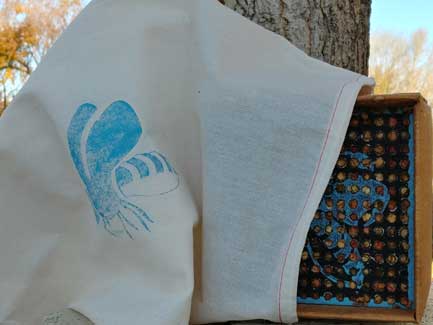
How to Store your Nesting Block/Bees for Winter

As warm summer days come to an end and cooler fall temperatures arrive, it is time to bring your nesting block (hopefully full of larvae) into storage for the winter months.
The female bees have a lifecycle of 6-8 weeks, as summer ends there will gradually be less and less activity around the block and then nothing at all as the spent bees perish. When there is no more bee activity around the block it is safe to store it for the winter.
Hungry birds, such as woodpeckers, know that larvae make a tasty meal. If the block is left out too late (and doesn’t have a protective screen) there is the risk of birds finding and destroying the nesting block you’ve tended.
A temperature between 5 & 15C will keep the cocoons in dormancy over the winter months. A cold room, semi-heated garage or refrigerator are common storage spots. The entire bee barn/nesting block unit can be brought inside if space allows, otherwise wiggle the nesting block out (needle nose pliers work well for this job). Place the block inside of a cloth bag to reduce leaf dust in your storage spot, and to allow the block to breathe.
Humidity is the worst enemy of the cocoons, the cocoons are made from leaf material and moisture can cause mold to form which will damage the cocoons.
The cocoons do not need to be extracted from the nesting tunnels. Female babies are placed at the back, males at the front, this ensures that the males can get out first when they hatch first in the spring. If extraction is attempted too early before the cocoon material is dried out completely, the cocoons/larvae might get crushed. It is best to leave the cocoons inside the block.
Safely stored in a cool location, the larvae will remain dormant until warmer days arrive next spring.

Bee Barn with protective bird guard screen

Woodpecker damage